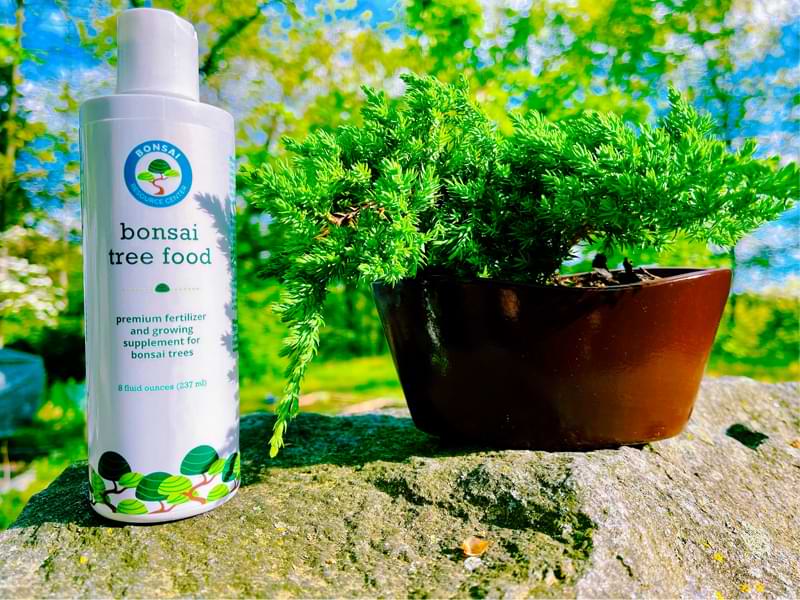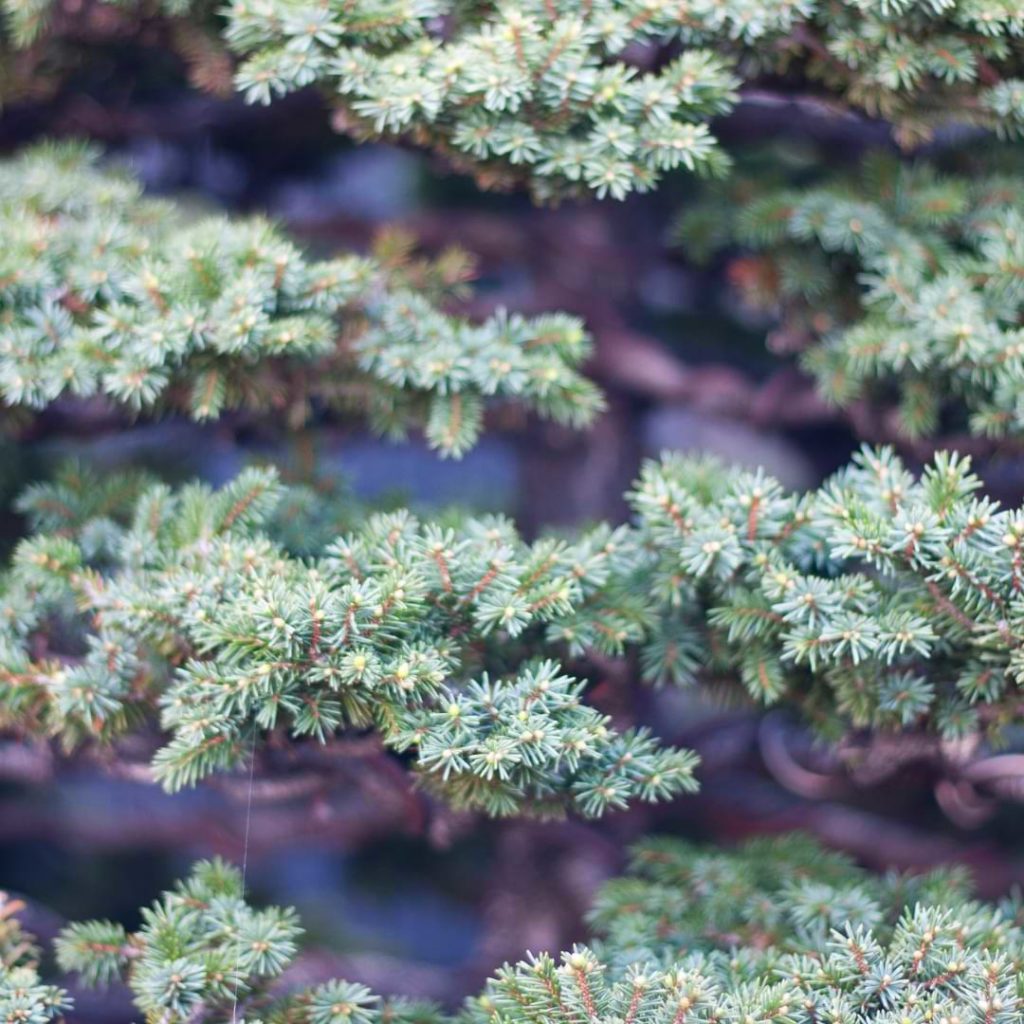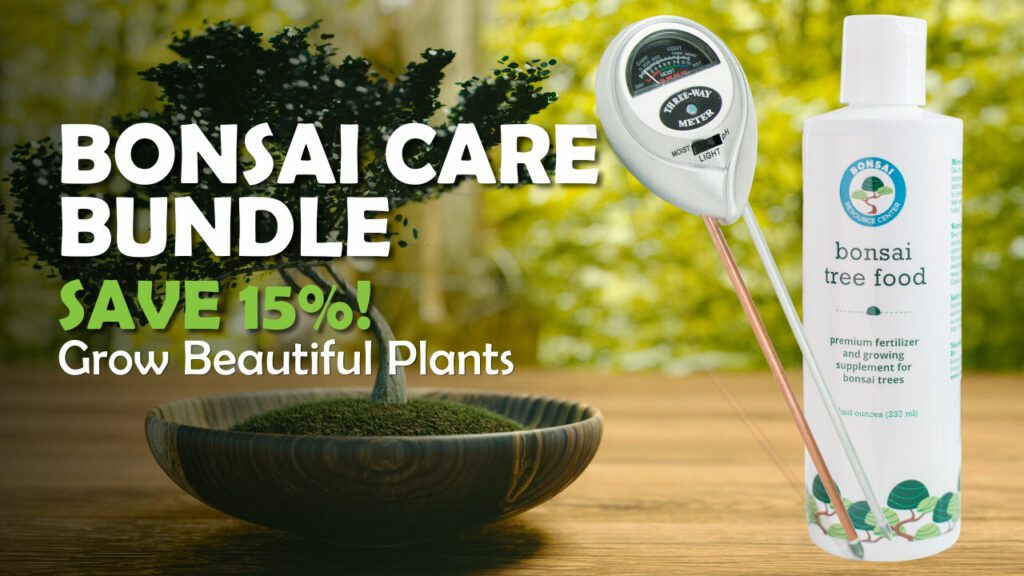Also known under its scientific name Picea pungens “glauca,” the Colorado Blue Spruce is a popular bonsai tree in the United States. This evergreen is native to cool weather forest regions in the Northern Hemisphere. The Colorado blue spruce has attractive silvery blue/green needles.
Can You Bonsai a Colorado Blue Spruce?
Spruce trees, in general, are a little bit tricky to style as bonsai. Their branches tend to be flexible and don’t hold new shapes right away. Colorado blue spruce bonsai falls into this category.
Even though it’s not easy to style a Colorado blue spruce, the tree remains a popular bonsai choice. It has a lovely appearance that is very attractive in bonsai form. Colorado blue spruce bonsai also is hardy (except in hot climates) and requires relatively little specialized attention for a bonsai.
Do Spruce Trees Make Good Bonsai?
Many bonsai enthusiasts praise spruce bonsai. Although spruce trees tend to grow tall, there are multiple types of spruce trees that are easy to train as bonsai. However, there are other types of spruce trees that are difficult to grow as bonsai. Choosing the correct type of spruce to bonsai places a large role in whether or not you can successfully bonsai spruce.
Growth Rate
In their natural environment, blue spruce can grow between 30-60 feet tall and 10-20 feet wide. The tree grows slowly during the first few years, but it eventually reaches a rate of about 12-24 inches of growth each year. However, it is possible to slow down this growth and keep Colorado blue spruce the appropriate size for bonsai. It generally takes between 10-15 years for a blue spruce tree to develop into an attractive bonsai specimen.
How to Keep a Colorado Blue Spruce Small
One of the easiest ways to keep a Colorado blue spruce bonsai small is to select a dwarf blue spruce variety. These grow significantly slower than their full-size counterparts. You can also keep this species small by pruning thoroughly on a regular basis and trimming the root system when repotting.
How to Shape a Blue Spruce Bonsai
Blue spruce bonsai can be shaped into many popular styles. One notable exception is broom. Some of the most common styles to consider are straight-trunk, curved-trunk, windswept, and multi-trunk. If you start with a blue spruce bonsai that is not already styled, you’ll need patience. It takes time to train bonsai into a distinct style. Unless you are prepared to spend years working on styling your spruce bonsai, you should consider buying a blue spruce bonsai that has already been trained. Then you’ll mostly just need to maintain what’s already there.
The majority of pruning should be done during the fall. You can do light pinching in the spring and summer if needed, but be very selective if you pinch back new shoots during this time. Don’t remove all the new growth.
Wiring should happen in winter or autumn when the Colorado blue spruce is growing more slowly. Remove the wire during the growing season. Be aware that it will take time for the bonsai to settle into a new position. Spruce trees are not easy to style as bonsai because it takes dedication to continue to rewire the branches to achieve the desired effect.
Picea Pungens Glauca Care
Spruce trees are not too picky about their care. This is part of why spruce is a popular bonsai despite being difficult to style. That being said, there are a few things you need to know about caring for a Colorado blue spruce bonsai.
Height & Width
Depending on shaping and training, Colorado blue spruce bonsai can be as small as 7 to 9 inches in height and 3 to 5 inches in width. Dwarf varieties of blue spruce are easier to keep small.
Light
Spruce bonsai love sunlight, especially during the spring and the summer. Place your bonsai in a location with direct light during the morning and evening. In most areas, you’ll want to make sure your Colorado blue spruce bonsai has shade during the afternoon. If you live in a cooler climate, shade during the afternoon isn’t as necessary, but in hot climates, the spruce may lose needles if exposed to the scorching midday sun.
During the winter, spruce bonsai do not need as much light. Colorado blue spruce goes through a dormant period.
Temperature and Humidity
Blue spruce bonsai should remain outside the majority of the year. Blue spruce can handle some high temperatures during the summer. Be aware that if you live in an extremely hot region, you may have more difficulty keeping your blue spruce bonsai happy. Providing shade during the hottest point of the day can help.
However, although blue spruce can survive freezing weather in its native environment, blue spruce bonsai is less protected.
To protect your Colorado blue spruce bonsai’s roots, either bury the container or place mulch over the pot before freezing weather arrives. If needed, you can shelter your bonsai in an unheated place, like a garage or shed, during freezing weather. While blue spruce bonsai should not be exposed to freezing temperatures without protection, it still needs a period of cool/cold weather during the winter months. Avoid bringing your spruce bonsai inside for more than a few days at a time.
Spruce bonsai benefits from humidity all year long. If you keep your bonsai in a sheltered area during the winter, be sure that there is some moisture in the air. Try placing shallow trays filled with water nearby to add extra moisture if you keep your bonsai in an unheated garage or storage space without adequate humidity.
Soil
Blue spruce isn’t too picky about its soil. This tree doesn’t care about the pH level and will do well as long as the soil allows water to drain quickly. Soil that remains moist for too long allows fungus and disease to develop.
Water
Unlike many bonsai, blue spruce does best when watered a little less frequently. While you don’t need to allow the soil to dry out completely between waterings, wait until the top three inches of soil are dry before watering again.
The exact watering schedule depends on several factors, so always check the soil to see if it’s time to water. You’ll water more frequently during the summer and less frequently during the winter.

Fertilizing
Since your bonsai doesn’t have access to as many nutrients as it would if it were planted in the ground, fertilizer helps your blue spruce bonsai stay healthy. Apply a small amount of fertilizer on a regular basis during the growing season.
I’d suggest using a liquid fertilizer because it is easy to dilute. Too much fertilizer can damage your bonsai’s root system. Our Bonsai Plant Food is safe and gentle to be used each time you water your bonsai.
Potting and Repotting
Blue spruce bonsai trees typically need to be repotted every four or five years. However, you should take a look at your tree’s roots once a year to see if your bonsai tree has become root-bound. If your bonsai’s roots fill the pot and are beginning to wrap themselves in a circle around the edges, then it’s definitely time to repot.
Summer is the best time to repot Colorado blue spruce bonsai trees. To repot, carefully remove the tree from the pot. Then remove as much of the soil as possible from the roots and trim the roots. Avoid removing more than ¼ of the root system.
Use fresh soil when you repot. Depending on the size of the root system after you trim the roots, you can either use the same container or select a slightly larger container for your bonsai.
The last step for repotting is to thoroughly water the bonsai. The best way to make sure the tree gets enough water at this point is to submerge the container in water. Then remove the container. It’s important that whatever container you use has adequate drainage holes to allow excess water to escape. After this, you’ll care for the tree just like normal.
Common Pests and Diseases
Unfortunately, blue spruce trees can be attacked by various pests and diseases. The good news is that most of the pests and diseases tend to spread in areas with a high concentration of blue spruce. Unless you are near an area like this, your bonsai shouldn’t be affected by the majority of common pests and diseases.
You should still be alert for issues. Blue spruce bonsai trees may attract aphids, mites, spruce needle miners, spruce budworms, or a variety of caterpillars. Pesticides can be used to get rid of these insects. Blue spruce bonsai may also have fungal diseases, including rust or needle cast. Rust is not usually more cosmetic and does not cause significant harm. Needle cast is a more serious fungal infection, which typically needs to be treated with a fungicide.
Any time you use pesticides or fungicides, be sure to follow the instructions on the label.
Propagation
Propagating Colorado blue spruce requires patience, and it isn’t always successful. Blue spruce can be propagated by both seeds and cuttings.
It isn’t normally recommended to propagate blue spruce with the intention to bonsai the tree. Mainly because blue spruce takes so long to mature. However, propagating a Colorado blue spruce tree yourself can be rewarding and fun to try as long as you are prepared to be patient for a long period of time.
Seeds
Colorado blue spruce is easy to start from seed. You’ll get a nice rate of germination even if you don’t prepare the seeds in advance.
If you do want to prepare the seeds to encourage them to germinate better, here’s what to do.
Allow the seeds to soak in water for 24 hours. Drain the water, and then place the seeds in a freezer-safe bag. Place in the fridge for around 4 weeks. Add extra water as needed to keep the seeds moist but not waterlogged.
Place the seeds into containers filled with high-quality potting soil. Cover with a very fine layer of soil. Water as needed to keep the soil moist. Place the containers somewhere that will allow the seeds to remain at room temperature.
Within around 2 weeks, you should see germination beginning. To care for the seeds, keep them in full sun and water frequently.
If you want to plant the seeds without preparing them first, follow all the instructions above, but skip soaking the seeds and placing them in the fridge. Your blue spruce seeds will still germinate, there just won’t be quite as many that develop properly.
During the first growing season, your seedling will grow somewhere between 1 to 4 inches. In later years, the seedlings will show more robust growth. Repot each year for the first 2 or 3 years. Wait until the third year to begin styling your tiny blue spruce bonsai. It will still take a long time before the trunk develops into a balanced, mature size.
Cuttings
Colorado blue spruce trees are a bit more finicky about being propagated from cuttings, but it’s still possible to do. But if you have access to cuttings, go ahead and give it a try.
The best time to take cuttings is in midsummer. Take 6-inch cuttings from the ends of healthy stems. Take a few more cuttings than you think you need. Not all the cuttings will develop roots.
Remove the needles from the bottom halves of the cuttings, and cut a notch into the bottom of each cutting. Then dip the bottom inch of the cutting into a rooting hormone. With most plants, I’d say that using a rooting hormone is optional, but with blue spruce, you’ll have significantly higher chances of the cuttings taking root if you use a rooting hormone.
Have a container prepared for each cutting. Use an equal mix of peat or coir and sterile sand in each container. Allow the potting mix to soak up water before placing the cuttings.
Make a hole deep enough for half of the cutting to fit in. Place each cutting in its container and firmly press the potting mixture in place
After potting, place the cuttings in a cool area outdoors with lots of bright, indirect light. Mist the cuttings twice a day. Don’t allow the needles to dry out, and water thoroughly before the potting mix dries out completely.
After about 2 months, you can begin checking for roots. Sometimes it takes up to 4 months for roots to develop. After 4 months, any blue spruce cuttings that haven’t developed roots are unlikely to do so in the future.
If needed, transplant the seedling into a larger container. After the third growing season, you can begin shaping and styling your Colorado blue spruce. It will take time for the new trees to develop into mature bonsai.
Bonsai With Us!
The Bonsai Resource Center is here to help you learn about all things bonsai and provide you with the tools you need to keep your plant healthy and strong. Explore our other articles, visit our online shop, and connect with other bonsai lovers in our Facebook group to learn everything you need to know about this rewarding hobby!



